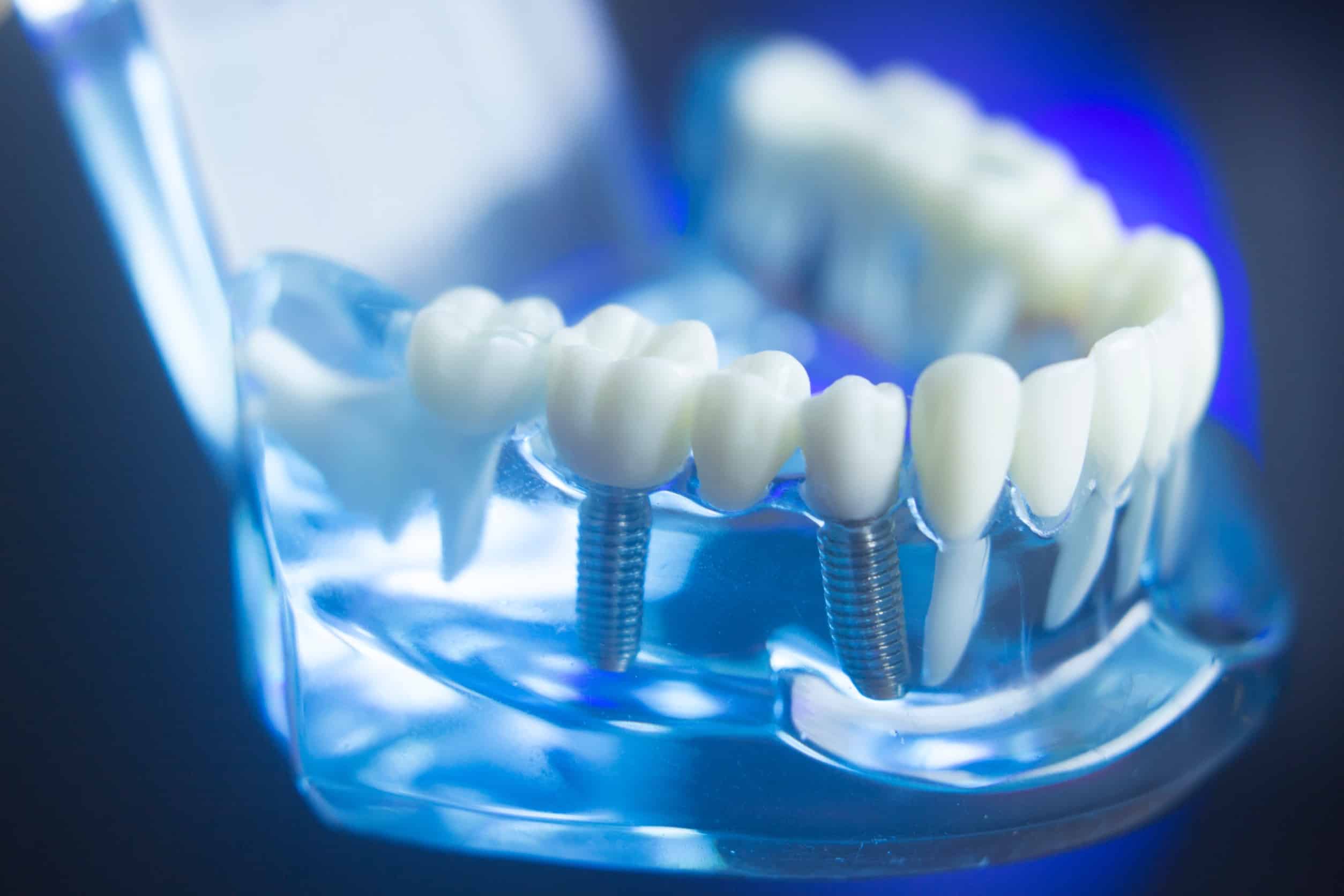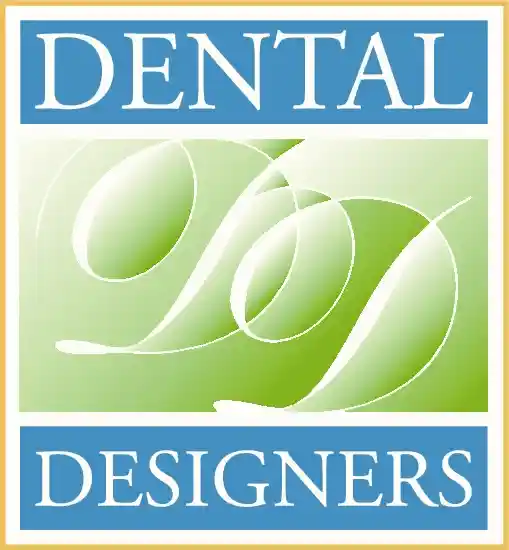All on 6 vs all on 4 dental implants in Rockford, IL
Introduction
When patients have badly damaged or missing teeth, dental implants provide an excellent tooth replacement solution for restoring smile aesthetics and chewing ability. However, traditional implants require placing a dental implant for every missing tooth root, which could mean getting several individual implants. Are you looking for dental implants in Rockford?
Advances in implant dentistry have led to efficient full-arch restoration options using 4-6 strategically placed dental implants to support an upper or lower arch of replacement teeth. Two standard full-arch solutions are “all-on-4″ implants involving 4 total implants and “all-on-6,” which uses 6 implants.
Both all-on-4 and all-on-6 dental implants offer methods for replacing an upper or lower arch of missing teeth with one non-removable prosthesis secured on just 4-6 dental implants. The all-on-4 process uses a bridge of replacement teeth supported by 4 implants, while the all-on-6 option uses 6 well-positioned implants to keep the entire span of replacement teeth.
While the two full-arch restoration approaches are similar, some key differences exist between all-on-4 vs all-on-6 implants regarding placement, treatment complexity, costs, and more. This article will outline everything you need to know about both all-on-4 and all-on-6 dental implants and how to decide which may be better suited for your tooth replacement needs.
What are All-on-6 Dental Implants?

All-on-6 dental implants offer a revolutionary full-arch replacement solution using just 6 dental implants to support an entire arch of missing teeth.
- With traditional full-mouth implants, each missing tooth root would need an individual implant placed. For patients missing all upper or lower teeth, this could mean getting upwards of 10 dental implants on one arch!
- The all-on-6 technique changed that by strategically using 6 dental implants per arch. These implants are placed at different angles to provide strong anchoring and support for a non-removable full bridgework of replacement teeth. The 6 implants allow secure restoration of either 10-12 upper or 12-14 lower teeth.
Benefits of All-on-6 Dental Implants:
- Requires Fewer Implants – The all-on-6 technique only calls for 6 dental implants for a complete arch of teeth. Traditional implant protocols required one implant for every missing tooth root. With potentially 10+ missing upper teeth or 12+ missing lower teeth, standard implant methods would require upwards of 10 individual implants just in one arch. The all-on-6 cuts this down, requiring just 6 strategically placed implants, no matter if you are missing 6 teeth or all teeth in the arch. This significantly reduces overall cost and surgery complexity.
- Restores Entire Arch of Teeth – Whether you are missing 6 consecutive teeth or a whole quadrant, the all-on-6 solution can bring back your complete smile in one arch. The full-arch bridge of synthetic teeth is securely anchored onto the 6 implants, providing a seamlessly restored arch of 10-14 beautiful replacement teeth that look and function like healthy natural teeth.
- Fixed, Non-Removable Teeth – The custom-designed bridgework supported on the 6 all-on-6 implants is permanently fixed like healthy teeth roots. No messy denture adhesives are required, and there is no having to take teeth in and out daily. You can eat, smile, kiss, and speak with total confidence and comfort, knowing your all-on-6 teeth are always secure.
Considerations with All-on-6 Implants:
- Slightly More Complex Procedure: The all-on-6 technique involves more than the simplified all-on-4 option. Placing 6 implants for optimal denture support requires advanced surgical skill and planning. All-on-6 candidates also tend to need more complex bone grafting procedures to allow implant placement.
- Higher Cost Than All-on-4 – Due to the more significant number of implants required and potentially greater need for bone grafting, all-on-6 implant treatment typically costs more than all-on-4 options. However, remember that all-on-6 also replaces more missing teeth per arch than all-on-4 methods.
While all-on-6 implants may have a more complex placement process and higher upfront cost, the long-term benefits of a non-removable and highly functional set of replacement teeth secured on just 6 dental implants make this solution an excellent investment for many dental patients needing complete arch restoration.
Higher Cost
The total costs for parts, surgery, and therapeutic work run approximately 30-40% higher for all-on-6 implant solutions than all-on-4. Some of the factors making all-on-6 more expensive include:
- Added Implants – The hardware, parts, and drilling for just two additional implants can add $800-$1500. High-quality implants range from $500-$800 apiece. And more drilling time in the surgery equates to higher oral surgeon fees.
- Extended Surgical Time – Given the extra precision and steps involved for the angled implants, all-on-6 surgeries run 60-90 minutes longer than all-on-4 placing 4 straight implants. With surgeon costs averaging $200-$300 per hour, this extended precision technique can mean $500+ in additional surgical expenses.
- Laboratory Prosthetic Fabrication – The dental lab bill runs 25-40% higher for all-on-6 cases because of the extensive full-arch bridge manufacturing. A top-tier zirconia or titanium-acrylic arch prosthesis with 6 abutment interfaces has more materials costs and technical time invested, averaging $3600 versus $2800 for all-on-4 output.
- Extra Adjustment Visits – Taking impressions, fitting the prosthetic, and biting adjustments are more intensive to ensure proper seating with 6 implants versus 4. Additional post-surgery check-ups over 2-3 months at $100 per visit further drive up the restorative costs for all-on-6 placement.
A typical all-on-6 case can cost $6000 more than an all-on-4 with combined parts, surgical treatment, and restoration expenses. I’m happy to clarify or expand any part of the cost breakdown! Let me know what other info would be helpful to communicate the pricing differences.
What are All-on-4 Dental Implants?

All-on-4 is a teeth replacement solution that utilizes 4 dental implants to support and secure a complete arch prosthesis of new teeth in patients who have lost all or most of their natural teeth in an upper or lower jaw.
- The all-on-4 protocol strategically places the 4 dental implants along the arch curvature, with 2 placed vertically in the anterior bone and 2 angled backward at 30-45 degrees in the posterior curves. Despite minimum implant hardware, this orientation provides solid anchoring to support the replacement teeth.
- The 4 securely integrated implants can have abutments connected to them, allowing for the fabrication of 12-14 tooth arch prostheses of replacement teeth. This full bridge of new teeth snaps securely onto the all-on-4 abutment framework to provide the patient with a complete set of fixed, non-removable upper or lower replacement teeth.
- Some key advantages of all-on-4 dental implants include shorter treatment times, lower costs, and less invasive implant placement, given the minimal implants required to support an entire arch of replacement teeth. This makes it an appealing streamlined option compared to alternatives like all-on-6, which utilize more implant hardware for full arch restorations.
Benefits of all-on-4 dental implants:
Uses Fewer Implants
The all-on-4 protocol only requires 4 dental implants to support an entire arch of replacement teeth. This is 2 fewer implants than all-on-6 solutions. Less dental implant hardware reduces costs and surgical time significantly.
Less Complex Procedure
Placing 4 straightforward implants is less complex than positioning 2 angled and 4 straight implants at precise depths and angles in the all-on-6 technique. All-on-4 implant surgery takes 1-2 hours less time for most dentists. Healing is also quicker with less invasive implant placement.
Shorter Treatment Time
The overall time can be reduced by 2-3 months with all-on-4 compared to all-on-6. Initial surgical visits are condensed since only 4 implants are involved, and less prosthetic adjustment is required over the healing phase before final teeth placement.
More Affordable Option
With fewer implants placed in a quicker, more straightforward surgery, all-on-4 costs roughly $6000+ less than complete all-on-6 solutions. Reduced surgical expenses, implant hardware costs, and streamlined laboratory prosthetic fees make all-on-4 the budget-friendly choice.
Treatment Complexity
The all-on-4 procedure involves straightforward placement of 4 parallel implants, reducing overall treatment complexity. In contrast, all-on-6 requires precise angulation of 2 posterior implants and 4 integrated straight implants for optimal structure and support. This demands advanced technical skills and training.
Surgical Invasiveness
Only 4 implant sites need to be drilled during all-on-4 surgery compared to 6 drillings for the all-on-6 procedure. Less invasive implant placement leads to quicker healing, less swelling, and reduced post-surgical discomfort.
Prosthetic Fabrication and Fit
A full-arch prosthesis is less intricate to fabricate and adjust when supported by 4 uniformly placed implants in all-on-4 solutions. The lab process is more complicated for connected angled and straight all-on-6 abutments, increasing tech time and expenses.
Treatment Expenses
In total, all-on-4 costs about $6000 less than all-on-6 on average. Shorter surgery times, faster healing, simpler prosthetics, and lower implant hardware expenses make all-on-4 the budget pick for full dental rehabilitation.
Primary considerations when choosing all-on-4 dental implants
Supports Less Teeth Per Arch
The all-on-4 protocol typically supports 10-12 replacement teeth per arch prosthesis. This meets the requirements for most patients needing entire upper or lower tooth restoration. However, all-on-6 solutions can accommodate up to 14 teeth per dental prosthetic over the implant framework. All-on-6 may support additional replacement teeth per arch for those with extensive bridgework demands.
Slightly Higher Risk of Failure
Although dental literature reports over 95% long-term success rates for all-on-4 implants, some data shows a 1-3% higher failure incidence over 10+ years than all-on-6. The added stability from 6 integrations lowers the risk of prosthetic detachment over decades of function. However, recent advances in implant surfaces minimize these discrepancies. In healthy bone, all-on-4 approaches over 90% lifetime functionality.
Comparing All-on-6 vs. All-on-4
Number of Implants:
All-on-6 implant protocols utilize 6 total implants to support an entire arch of replacement teeth – specifically 2 posterior angled implants tilted inward toward one another at 30-45 degree angles and 4 anterior straight implants aligned vertically. In contrast, the all-on-4 solution uses just 4 total implants – 2 anterior vertical implants combined with 2 posterior implants angled backward at similar 30-45 degree tilts.
Complexity of Procedure:
Placing 6 uniquely angled implants accurately at precise depths and orientations makes all-on-6 treatment more technique-sensitive and complex. Surgeons require advanced 3D planning, guided tooling, and skill mastery over a significant learning curve. Meanwhile, all-on-4 simply positions 4 implants, reducing calibration specificity, surgical instrumentation demands, and the need for advanced specialist-level training. Overall, all-on-4 is performed more uniformly by typical general dentists adept at conventional implant placement.
Treatment/Healing Time:
The total time for surgery, recovery, bone integration, impressions, prosthetic fabrication and fit, and finalization is usually 8-12 months for all-on-6 solutions – approximately 2-3 months longer than similar all-on-4 cases. The actual surgery duration is 60-90 minutes faster for placing just 4 implants. Post-surgical healing takes weeks longer with 6 wounds rather than 4. And final prosthesis development requires more back-and-forth minor adjustments across the 6 unique abutment angles.
Cost Differences:
With more implants, extended surgical involvement, longer healing periods, and technical lab work, all-on-6 comes at a higher monetary premium, costing patients, on average, 30% to 40% more than streamlined all-on-4 treatment. When pricing hardware parts, surgeon fees, and dental technician charges, total fees run $5000-$7000 higher for complete all-on-6 implant treatments.
Success Rates
Both protocols report over 95% long-term success rates. However, some studies show 1-3% higher failure rates long-term (10+ years) among all-on-4 implants.
Teeth Supported Per Arch
Full arch prosthetics over all-on-6 frameworks can accommodate up to 14 teeth. All-on-4 replacement arches typically integrate 10-12 teeth depending on the patient’s bone anatomy and bridgework needs.
The Best Choice Depends on Your Needs
All-on-6 Solutions
All-on-6 implants are ideal for those requiring complete, full-arch replacement of 12 or more upper or lower teeth. The 6 strategically angled implants can reliably support prosthetics with up to 14 new teeth. Those with extensive bridgework demands or severely resorbed ridges benefit from the augmented structure of integrated posterior implants to restore chewing and speech. If budget allows, all-on-6 provides maximal longevity and tooth capacity.
All-on-4 Implants
The streamlined all-on-4 protocol sufficiently replaces 10-12 missing teeth per dental prosthesis for most patients. The 4 well-spaced implants can anchor non-removable arches, improving aesthetics and confidence at more affordable prices. If less than 14 teeth need replacement per arch, all-on-4 presents a minimally invasive solution to restore oral function permanently.
Consulting Your Dentist
Every patient scenario is unique, so visiting an implant dentistry practice for in-depth clinical diagnostics before treatment is vital. Your Rockford dentist can analyze bone density and anatomy with advanced 3D scanning, designing custom-guided surgery for optimal implant positioning if suitable. Expert guidance is crucial when investing in oral rehabilitation.
Conclusion
In summary, all-on-6 and all-on-4 dental implants offer permanent solutions for patients needing total tooth replacement in a jaw that has experienced significant bone loss and degeneration. However, depending on specific oral demands and constraints, one option may prove optimal.
Patients with budget limitations or seeking a minimally invasive approach with shorter treatment timeframes find all-on-4 implants the most practical fit. The 4 well-angled implants sufficiently support dental prosthetics, replacing 10-14 teeth for most. However, for those needing expanded bridgework of greater than 12 new teeth per arch, all-on-6 solutions provide superior structural support and longevity despite higher costs.
Younger patients or those placing high functional stresses on their teeth may also consider the all-on-6 protocol if the extended healing period and expenses are not prohibitive. The additional posterior implants help mitigate long-term prosthetic wear and potential failure risks decades down the road. That said, all-on-4 success and survival rates remain remarkably high.
Take Aways
In closing, while all-on-4 dental implants present a streamlined, economical choice for many needing rehabilitation, all-on-6 systems give dentists added versatility to accommodate more replacement teeth with a reduced chance of prosthetic detachment long after implantation. Visiting an experienced reconstructive dentist for a thorough oral examination and advanced CBCT 3D imaging allows one to design an appropriately personalized implant treatment plan tailored to one’s unique anatomy, needs, and budget.
Schedule Your Appointment with Our Dentist

